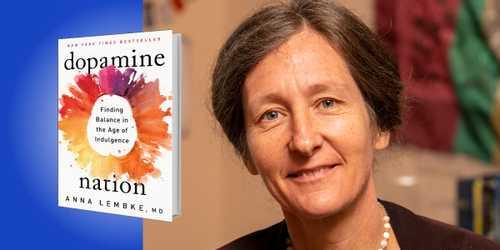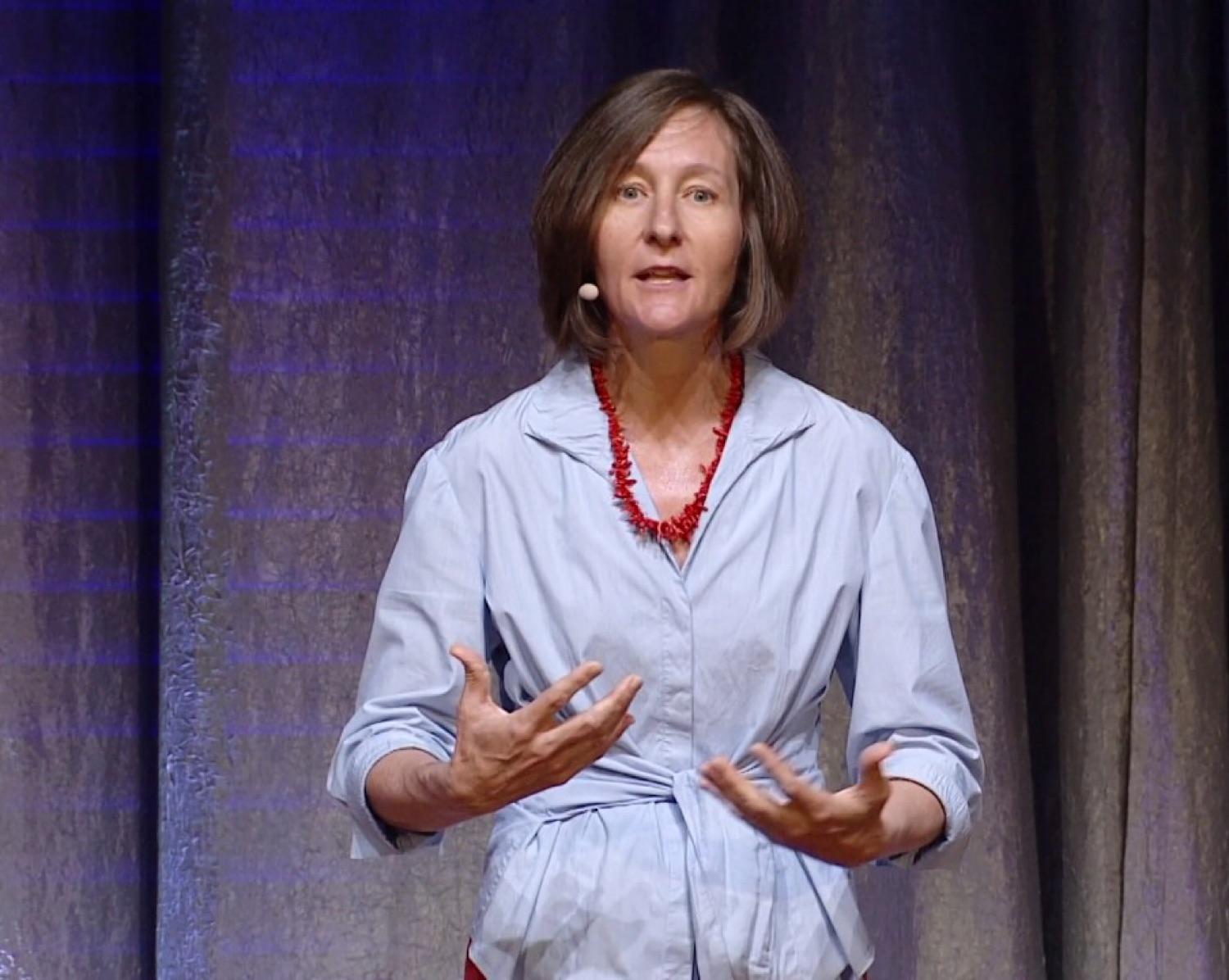Dopamine Nation: Finding Balance in the Age of Indulgence
Curated from: nextbigideaclub.com
Ideas, facts & insights covering these topics:
13 ideas
·8.59K reads
69
2
Explore the World's Best Ideas
Join today and uncover 100+ curated journeys from 50+ topics. Unlock access to our mobile app with extensive features.
Finding Balance in the Age of Indulgence
Anna Lembke, medical director of Stanford Addiction Medicine, program director for the Stanford Addiction Medicine Fellowship, and chief of the Stanford Addiction Medicine Dual Diagnosis Clinic, shares key insights from her new book, Dopamine Nation: Finding Balance in the Age of Indulgence.
171
1.29K reads
The Balance Wants To Stay Level
One of the most important discoveries in neuroscience in the past 100 years is that pleasure and pain are co-located. The same parts of the brain that process pleasure also process pain. And pleasure and pain work like a balance. When we feel pleasure, the balance tips one way; when we feel pain, it tips the other. One of the overarching rules governing this balance is that it wants to stay level. After any deviation from neutrality, our brains will work very hard to restore a level balance, or what neuroscientists call homeostasis.
182
826 reads
… So Pleasure Will Be Followed By Pain
When we feel pleasure, our brain releases a little bit of the neurotransmitter dopamine in our brain’s reward pathway, and our balance tips slightly to the side of pleasure. But no sooner has that happened than our brain adapts to the increased dopamine by down-regulating my dopamine receptors and dopamine transmission. Why? Because, for the balance to level, it has to tip an equal and opposite amount to the other side, the side of pain. This is the aftereffect, the hangover, the comedown.
174
780 reads
The Balance Tips More And More And Then Some
If we wait long enough, neutrality is restored, and the hangover and the comedown pass. But what if we don’t wait? What if, instead, we go after pleasure and then again after pleasure?
Once that happens, we’ve changed out joy set point. We need to keep doing what gives us pleasure—not to feel pleasure, but just to feel normal. And as soon as we stop doing it, we experience the universal symptoms of withdrawal from any addictive substance—anxiety, irritability, insomnia, dysphoria, and mental preoccupation with using, otherwise known as craving. This is the hallmark of the addicted brain.
184
656 reads
A Life-Saving Mechanism In Non Life-Threatening Times
This fine-tuned pleasure–pain balance of ours has evolved over millions of years to help us approach pleasure and avoid pain. It’s what has kept us alive in a world of scarcity and ever-present danger. But here’s the problem: We no longer live in that world. We now live in a world of overwhelming abundance.
167
644 reads
To Dopamine, Any Drug Is A Drug - And Today’s Drugs Are 24/7
The access, quantity, variety, and potency of highly reinforcing drugs and behaviors has never been greater, including drugs that didn’t exist before—texting, tweeting, gaming, gambling, sugar, shopping, vaping, voyeuring. The list is endless. Online products with their flashing lights, celebratory sounds, laudatory likes, and bottomless bowls promise ever-greater rewards just a finger click away. They’re engineered to be addictive. The smartphone is the equivalent of the hypodermic needle, delivering digital dopamine 24/7 for a wired generation.
182
590 reads
Innocent Drugs, Same Effect: Dopamine Overload
If you haven’t met your drug of choice yet, it’s coming soon to a website near you. Yet despite this increased access to all these feel-good drugs and behaviors—or as Anna Lembke hypothesizes, because of it—we are more miserable than ever. Rates of depression, anxiety, physical pain, and suicide are increasing worldwide, especially in wealthy nations.
171
561 reads
We’re Titillating Ourselves To Death
“Throughout my 20-year career, I have seen more and more patients, including otherwise healthy young people with loving families, elite education, and relative wealth, presenting with depression, anxiety, and full-body pain. We are titillating ourselves to death.”
Anna Lembke
167
555 reads
Dopamine fasting
Anna Lembke put a patient of hers that was suffering from debilitating anxiety and depression on a dopamine fast: instead of prescribing antidepressants, she suggested he abstain from all screens, including video games for one month.
The patient returned a month later and reported feeling better than he had in years—less anxiety, less depression. Why? Because when he stopped bombarding his reward pathway with dopamine, he gave his brain the opportunity to restore homeostasis, a level balance.
183
535 reads
Just Wait Long Enough
Whatever your drug of choice, give it up for a month, a week, or even a single day. When you do, notice how, at first, your pleasure–pain balance tilts to the side of pain, and you feel restless, cranky, and most of all preoccupied with using your drug. Your brain is screaming out all the reasons why you should use, even though you committed to a period of abstinence. But if you wait long enough and balance is restored, you’ll find that you’re free. Your mind is less preoccupied with using, you’re more able to be present in the moment, and life’s little, unexpected joys are rewarding again.
181
462 reads
To Reset, First Abstain
If and when you decide to go back to using your drug of choice, remember to create literal and metacognitive barriers between yourself and it. The bottom line is this: To reset your dopamine brain, first abstain.
173
583 reads
What If We Tip The Scale On The Pain Side First?
In the late 1960s, scientists conducted a series of experiments on dogs. Due to their obvious cruelty, these experiments would not be allowed today. Nonetheless, they provide important information on brain homeostasis, or leveling the balance.
164
577 reads
Pain As A Pathway To Pleasure
With repeated exposure to a painful stimulus, the dog’s mood and heart rate adapted in kind. The initial response (pain) got shorter and weaker. The after response (pleasure) got longer and stronger. Pain morphed into hypervigilance, which morphed into a fit of joy. It’s impossible to read this experiment without feeling pity for the animal subjected to this torture, yet the so-called fit of joy suggests a tantalizing possibility: By pressing on the pain side of the balance, might we achieve a more enduring source of pleasure?
177
527 reads
IDEAS CURATED BY
CURATOR'S NOTE
How our smartphones kill a mechanism that works to keep us alive
“
Xarikleia 's ideas are part of this journey:
Learn more about personaldevelopment with this collection
Understanding the concept of the self
The importance of living in the present moment
The illusion of control
Related collections
Similar ideas
Read & Learn
20x Faster
without
deepstash
with
deepstash
with
deepstash
Personalized microlearning
—
100+ Learning Journeys
—
Access to 200,000+ ideas
—
Access to the mobile app
—
Unlimited idea saving
—
—
Unlimited history
—
—
Unlimited listening to ideas
—
—
Downloading & offline access
—
—
Supercharge your mind with one idea per day
Enter your email and spend 1 minute every day to learn something new.
I agree to receive email updates


